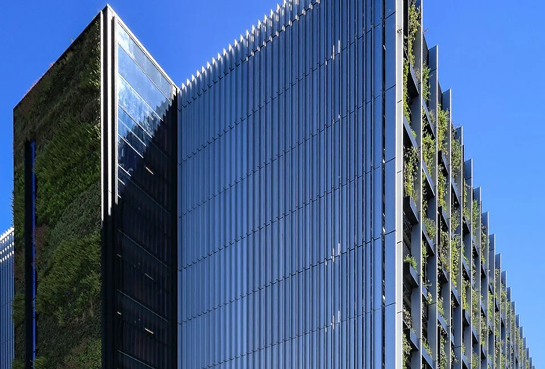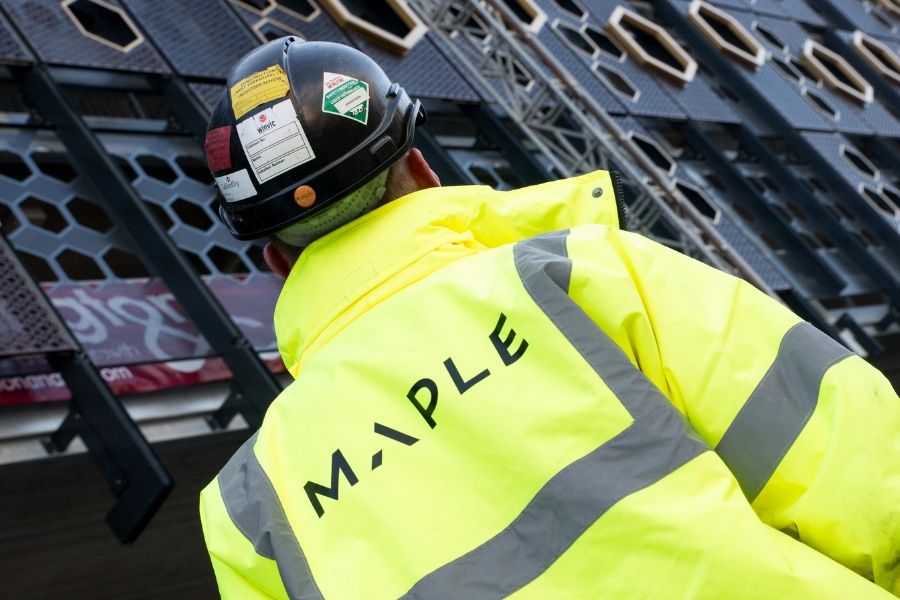
Latest
News
5 Steps To A Succesful Façade Project | Maple

- About Maple (100)
- Car Parks (90)
- Office and Retail (47)
- Government (39)
- Rainscreen (36)
- Louvres (30)
- Education (24)
- Residential (24)
- Brise Soleil (22)
- Health (20)
- HSEQ (18)
- Commercial Blinds (16)
- Sustainability (15)
- Data centres (10)
- Pre-Construction services (10)
- Architectural facade (7)
- North West (2)
At Maple, we believe that turning our clients’ unique design concepts into practical reality requires a consultative approach ― right from Day One. It’s no surprise we have a ‘Head of Pre-construction’. Here, Adam Jones explains why early collaboration, intelligent design and value engineering (and prototypes that leave nothing to chance) is the way to achieve the best results.
1. Collaborate early
Historically, suppliers were given a specification and told to get on with it. These days, we collaborate with architects, contractors, planners and clients ― and the earlier we can do so, the better. Maple have been creating façades for many years and although architects and clients will be clear what they want the finished product to look like (and we respect that), we can use our experience and expertise to influence the design to make the project easier and more cost-effective. Part of that process also involves collaborating with sub-contractors and suppliers (especially for steelworks and concrete) ― it makes more sense when we’re all pulling together.
Insight
We start talking to steelwork contractors on large projects even before we’re in contract, and collaborate on designs and processes. For example, they can put holes in the steelwork for our façade fixings, according to our specifications. It can be quicker, easier and more cost-effective than drilling the holes on site, and having to reseal against rust. Working with clients and planners is particularly important when it comes to colour specification and environmental considerations.
2. Make Health & Safety the priority
Getting a great-looking project finished on time and on budget means nothing if people get hurt. At Maple, we place health and safety above all else, throughout the manufacturing process and during installation on site. We always carry out robust risk assessments and prepare comprehensive method statements. Our processes come from years of experience; some of it really simple ― for example, we know how heavy things are! In short, if it’s not safe, we don’t do it.
Insight
Safety begins during the design phase. For example, on large car park projects, the façade is often close enough to the building interior for people to be able to touch it from behind. We adapt the specification and manufacturing process to ensure no sharp edges or burrs are left behind, and include it all in comprehensive RAMS documents.
3. Standardise and Simplify
This seems contradictory, because we’ve built our reputation on creating bespoke façades for all sorts of unique applications. However, by understanding what the architect or client needs as an end result, we can still use our experience to build in standard processes and standard components. There is no need to reinvent the wheel every time.
Insight
On every project, we spend time understanding what the architect wants the design to look like. This often allows us to remove some unnecessary complication ― for example, taking two components from the specification and redesigning them into one for manufacture... and using repeat patterns and similar materials.
4. Get it right first time
Creating a design in 2D is all very well but sometimes the first time an architect or client sees the result is on the building ― and by then it’s too late. We use 3D modelling and create samples to give everyone the confidence that what we’re manufacturing is what they actually want.
Insight
We’ve created a dedicated prototype area at our Stockport factory. Actual size, fully fabricated panels, louvres and components are displayed just as they would look on the finished building. Architects and clients can get a feel for the construction, finish and colour of the prototype before it’s too late. You’d be amazed how often something comes out of the woodwork.
5. Finally, look at the big picture
Creating architectural façades is not a linear process. Yes, there are lots of stages ― from design to manufacture, coating and installation ― but they all have an effect on each other. Here at Maple, we take a unified approach. For example, constraints on installation may change how we manufacture something; or design may impact the coatings.
Conclusion
Detailed drawings, site surveys, samples and robust QA can all contribute to a successful project. At Maple, we go further ― by getting under the skin of every project from Day One, and using our unrivalled knowledge and experience to add value at every stage.
